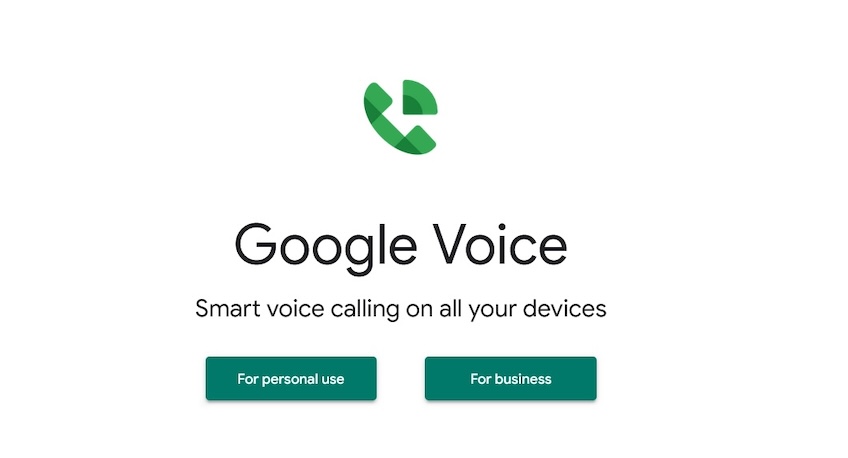The Public Switched Telephone Network (PSTN) is the aggregate of the world’s circuit-switched telephone networks. These networks are operated by national, regional, or local telephone operators.
To put it more simply, PSTN is what we typically think of as “landlines.”
Some businesses still use landlines these days. But should they?
We’d argue that for most modern businesses, the answer to whether they need a PSTN today is a resounding “no.”
It’s outdated, expensive, and there are now far more versatile solutions available. We’ll take a look at some of these alternatives below. But first, here’s why PSTNs probably aren’t relevant for your business.
Why PSTNs are No Longer Relevant
The vast majority of businesses no longer need to connect to PSTN. Instead, they should seek out newer, more advanced solutions.
Here’s why:
Shift to Digital
Global communications have already shifted from analog to digital. Yet PSTN systems are still rooted in analog technology. This makes it difficult for them to keep up with digital advancements.
Digital systems tend to offer clearer audio quality and more scalability. Plus they can seamlessly integrate with apps, websites, and other digital platforms. Overall, they’re just a far superior choice for your digital business presence.
Small Businesses
In the age of start-ups and SMEs, internet-driven solutions are king. It’s no wonder that a significant number of these small businesses have adopted VoIP systems rather than PSTNs.
It doesn’t just come down to affordability. VoIP systems are also more versatile. VoIP provides an array of advanced features—from call analytics to easy integration with CRM tools—that were previously only available to large corporations.
This means that by adopting VoIP, even small businesses can operate with the same efficiency and professionalism as their larger counterparts. All without the hefty price tag that PSTN systems often come with.
Larger Businesses
For more substantial enterprises, Unified Communications as a Service (UCaaS) has become the go-to.
In fact, a 2022 study from Spiceworks Ziff Davis reported the following:
- 31% of businesses use unified communications solutions, up from 22% in 2019
- 51% of IT professionals stated that their organization prefers to work with vendors who offer an “all-encompassing suite of communications solutions.”
These platforms offer a single communication environment that intertwines voice calls, video conferencing, instant messaging, and more.
The appeal of UCaaS is its streamlined approach. It gives you the ability to create a singular, unified digital workspace, breaking down communication barriers and enhancing collaboration across various departments. This level of streamlined communication is nearly unimaginable with traditional PSTN.
Consumer Behavior
It’s not just businesses that have made the move away from PSTN. Our personal communication habits have a trickle-up effect on business trends. So as more individuals rely on their smartphones for communication, the household landline is becoming a relic of the past.
This behavioral shift signifies that consumers simply prefer mobile and digital communication. As the momentum for this shift grows, businesses need to adapt and meet consumers where they’re at. And with Pew Research reporting that almost 3 in 10 adults are connected to the internet all the time, this means businesses need to embrace digital and mobile communication.
Death of Landlines
Finally, the physical infrastructure itself which supports traditional landlines is aging, largely because its upkeep is complex and expensive. Telecom companies, recognizing the declining demand for landlines and the rising costs, are more inclined to invest in digital solutions instead.
The result? Even if businesses wanted to adopt PSTN, soon, it might not even be a viable option in many urban areas.
The Few Exceptions that Should Still Connect to PSTN
The case against landlines is pretty strong when you consider the facts above. But there are still some very unique, niche scenarios where a PSTN might still be relevant.
Let’s explore them so you can know for sure whether or not to entertain this as an option:
Remote Locations
There’s no denying the digital divide that exists between urban and remote regions. In some places, mountains can block signals, or the infrastructure for high-speed internet simply hasn’t caught up.
If that’s the case, PSTN remains a lifeline. The analog nature of PSTN ensures that even with limited technological advancements, residents and businesses in these areas can stay in the loop with reliable communication.
Emergency Services
Dependability is key when it comes to emergency services. Modern communication methods offer many advantages, but they have one major downfall: their reliance on electricity. This can be potentially life-threatening if emergencies occur during power outages.
PSTN, in contrast, operates independently of local power grids, ensuring that emergency services are accessible even if other systems fail. This reliability is crucial in crisis situations where every second counts.
Certain Industries
Change, especially technological change, doesn’t permeate all sectors simultaneously. Some industries, whether due to regulatory constraints, budgetary considerations, or sheer size and complexity, still operate using legacy systems intertwined with PSTN.
For example, certain government agencies or manufacturing units might find it cumbersome to overhaul their entire communication infrastructure in a short span. For them, PSTN remains a necessary bridge until the entire ecosystem transitions to newer technologies.
Even these few exceptions are all dwindling with time. However, they underline the importance of understanding the specific needs and constraints of a situation before making blanket judgments. For the vast majority, PSTN really is a relic of the past, but there are cases where it’s still a functional part of the present.
Alternatives to Landlines and PSTN
The good news is that today, businesses have no shortage of communication choices. Whether you’re a solopreneur or a large enterprise, there are robust communication tools to support all your needs.
For Solopreneurs
As a modern-day entrepreneur, you’re juggling multiple roles and responsibilities and wearing multiple hats. You’ll need communication tools that are not only cost-effective but also versatile.

- VoIP Services: VoIP platforms like Google Voice not only allow solopreneurs to make and receive calls using the internet but also offer features like voicemail, call forwarding, and text messaging. With a professional number that can be set to ring on multiple devices, staying connected becomes easier.
- Professional Cell Phone Plans: Depending on our business, even a simple cell phone plan could suffice. Smartphones these days are equipped with powerful apps and features, making them way more than just calling devices. Choosing a professional cell phone plan can ensure you have uninterrupted service, ample data, and the freedom to use business-specific apps on the go.
For Small Teams
For small teams, collaboration is key. The communication tools here should foster teamwork and be easy to deploy.

- Feature-rich VoIP Systems: Again, VoIPs are a great option, but you might find yourself needing something more specialized than Google Voice. Platforms like RingCentral or Vonage cater specifically to small businesses. From voicemail transcription to video conferencing, these solutions pack in a plethora of features, ensuring seamless communication within the team and with clients.
- Integrated Collaboration Tools: With apps that combine chat, video calls, and file sharing, small teams can collaborate in real-time, ensuring productivity remains high. Think Slack, Zoom, and other tools.
For Medium-sized Businesses
Scaling up in size brings about more intricate communication demands. A medium-sized enterprise requires tools that are more integrated and offer a wider array of functionalities.

- Unified Communication Solutions: Platforms like Cisco’s Webex or Microsoft Teams can serve as a one-stop solution. From HD video meetings to integrated chat rooms and file-sharing capabilities, these platforms ensure that all communication needs are under one roof.
- Scalability: As your business evolves, so should your communication tools. Solutions catering to medium-sized businesses should offer the flexibility to add or remove features based on changing demands.
For Enterprise
Global corporations operate on a different scale. Their communication infrastructure needs to be reliable, secure, and adaptable.

- High-end UCaaS or CPaaS Platforms: Companies like Twilio offer enterprise-grade solutions that are both robust and customizable. From global voice and SMS to video, everything can be tailored to fit the company’s unique demands.
- Dedicated Enterprise VoIP Solutions: Brands like Avaya have also been catering to the communication needs of big businesses for years. Their dedicated solutions are built to handle high call volumes, offer crystal clear voice quality, and integrate with other enterprise software.
Final Thoughts
Communication technology has shifted from the traditional PSTN to a wide array of digital solutions, and businesses should be looking to align with current trends and consumer behavior. Doing so not only ensures effective communication but also signals to others that they’re forward-thinking and adaptable.
While PSTN has its merits and remains relevant in certain niche areas, it’s undeniable that digital communication methods now offer more efficiency. They’re better suited to the fast-paced, interconnected world we live in. Plus, consumers have already made the shift to using them way more than PSTN systems.
So, while PSTN might seem comfortable or familiar, remember that comfort can sometimes be the enemy of progress. Modern solutions like VoIP aren’t just alternatives to PSTN—they’re superior in many ways.
